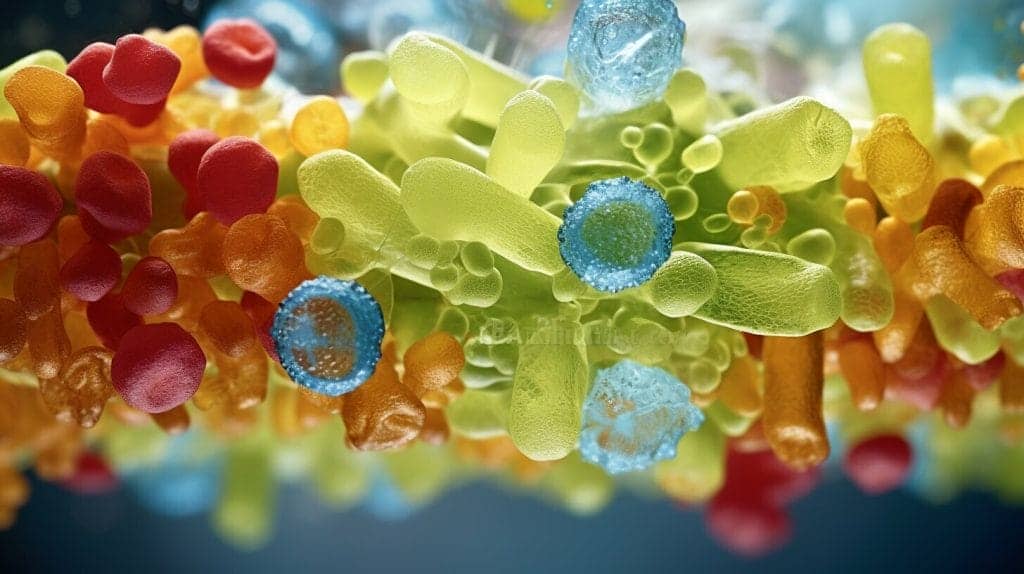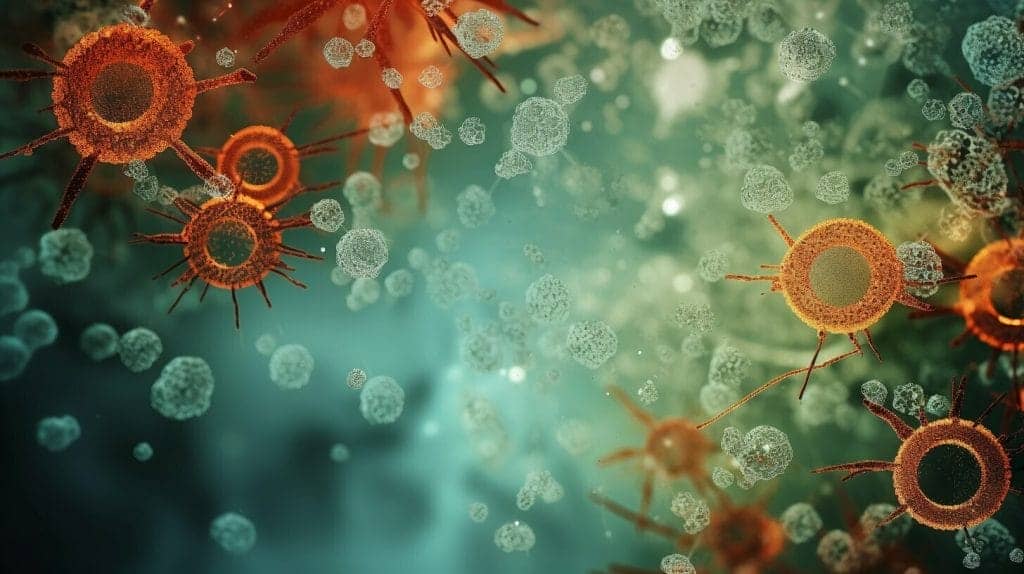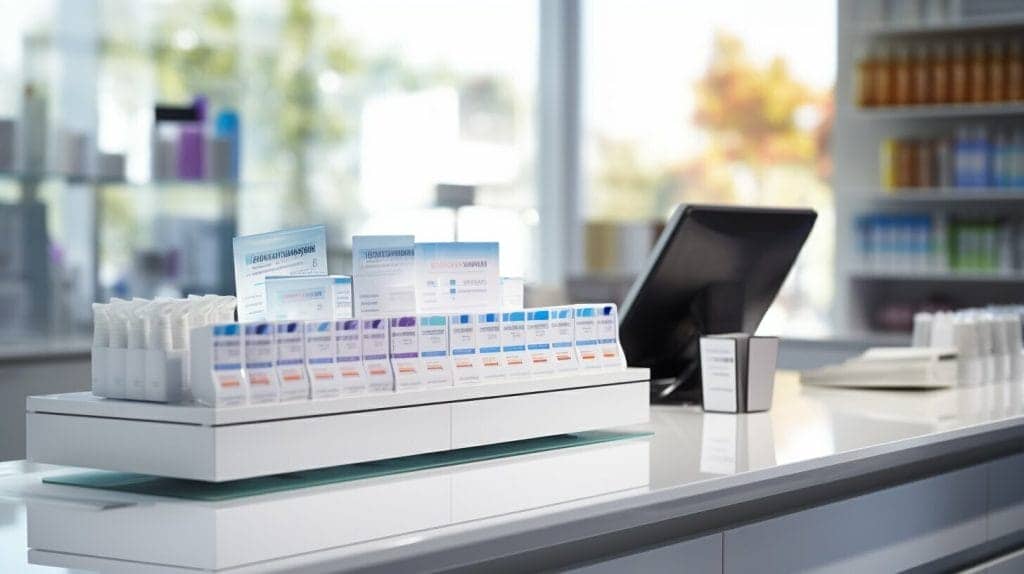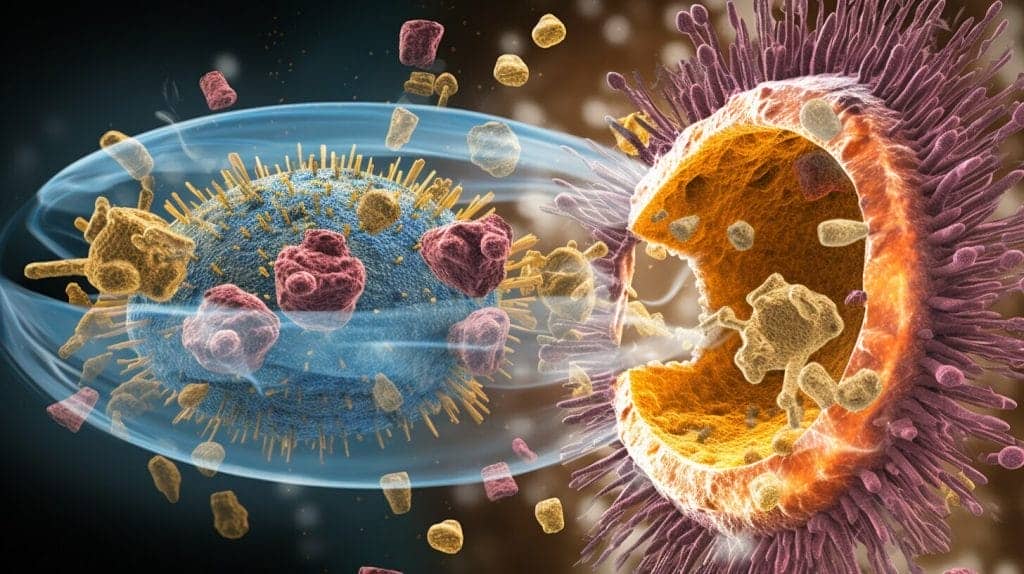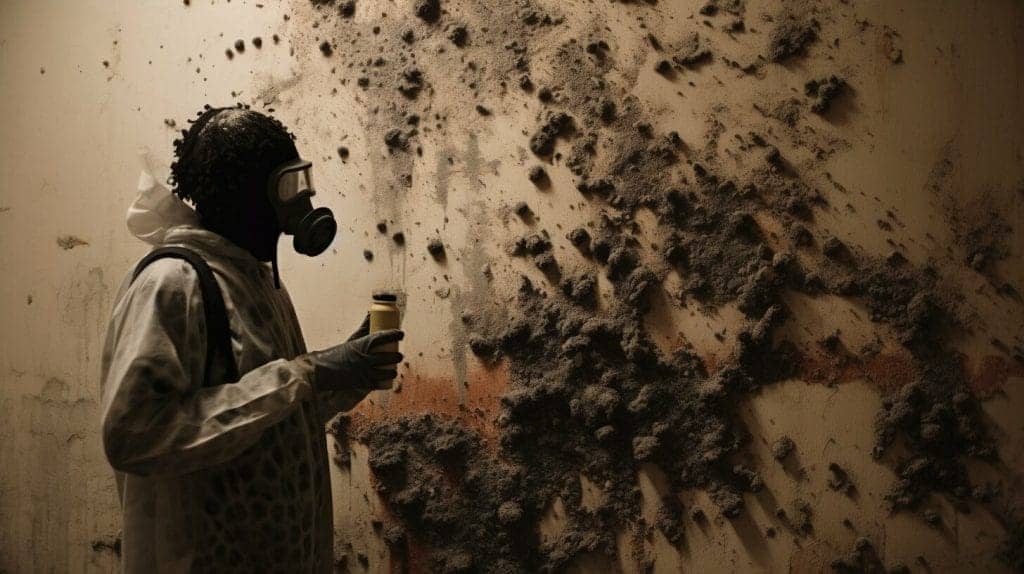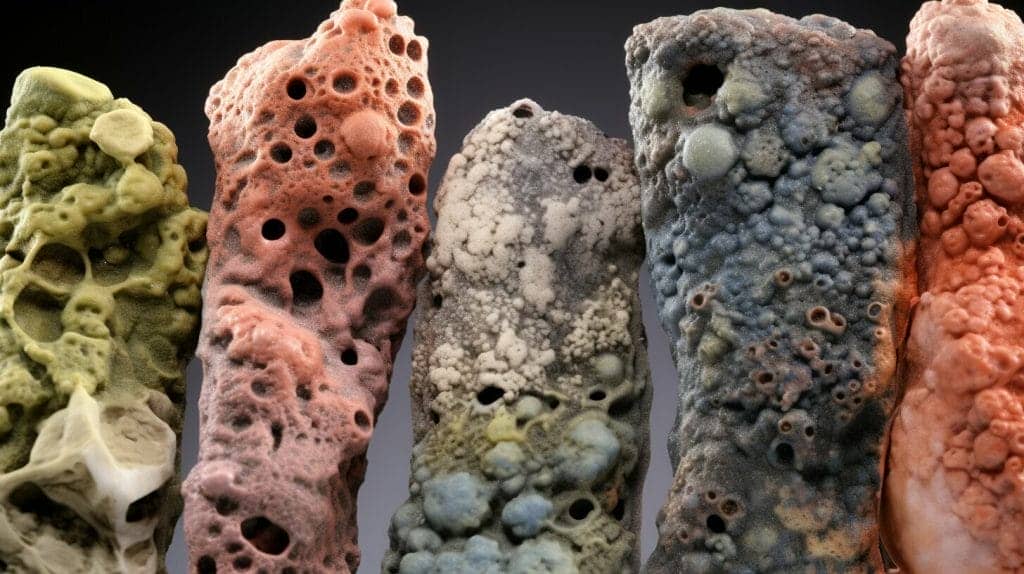Mold toxicity is a growing concern in today’s world, with millions of people suffering from its harmful effects. Understanding the molecular targets involved in mold detoxification is crucial to effectively combating the issue. In this section, we will delve into the pathways and mechanisms of mold detoxification, shedding light on this critical subject.
Key Takeaways:
- The importance of understanding the molecular targets for mold detoxification
- An overview of the pathways and mechanisms through which mold detoxification occurs
Understanding Mold Detoxification: A Holistic Approach
When it comes to mold detoxification, a holistic approach can offer a more comprehensive and effective solution for individuals suffering from mold toxicity. Combining traditional medicine with holistic treatments can address not only the symptoms but also the root causes of mold toxicity.
At Oasis Medical Institute in Tijuana, MX, they understand the importance of a holistic approach to mold detoxification. Under the guidance of Dr. Francisco Contreras MD, their integrative approach to treating Mold Toxicity involves a range of individualized treatments tailored to each patient’s unique needs.
Dr. Francisco Contreras MD: A Leader in Holistic Mold Toxicity Treatment
Dr. Contreras brings over 30 years of experience in alternative medicine and is a renowned expert in the field of cancer treatment. He has dedicated his career to the development of holistic and integrative medicine and has helped thousands of patients overcome their health challenges.
“We believe that an integrative approach is the most effective way to treat Mold Toxicity. By combining the best of traditional medicine with holistic treatments, we can provide our patients with the most comprehensive and effective solutions.” – Dr. Francisco Contreras MD.
At Oasis Medical Institute, they offer a holistic Mold Toxicity treatment program that incorporates an array of approaches, including nutrition, detoxification, and immune system support. Patients receive a personal treatment plan to address their specific needs and symptoms.
The Role of Molecular Targets in Mold Detoxification
Mold detoxification involves a complex interplay of molecular pathways and mechanisms. Understanding the molecular targets involved is crucial for effective mold detoxification.
One important molecular target is glutathione, a powerful antioxidant present in every cell of the body. It plays a critical role in detoxifying harmful substances, including mold toxins. Another important target is the liver, which is responsible for processing and eliminating toxins from the body.
| Molecular Targets: | Detoxification Function: |
|---|---|
| Glutathione | Eliminates mold toxins |
| Liver | Processes and eliminates toxins from the body |
In addition to these targets, research has identified a range of molecular approaches for mold detoxification. These include the use of enzymes, such as proteases, to break down mold toxins, as well as the use of chelating agents to bind and remove toxins from the body.
Further understanding of these molecular approaches and targets is necessary to develop effective mold detoxification treatments.
Unveiling the Key Pathways for Mold Detoxification
Research has shown that understanding the key pathways involved in mold detoxification is crucial for effective cleansing of the body. According to recent studies, there are several pathways through which mold toxins can be eliminated from the body, including the glutathione pathway and the methylation pathway.
The glutathione pathway involves the production of glutathione, a powerful antioxidant that helps protect the body from harmful toxins and substances. Glutathione binds to mold toxins and eliminates them through urine and feces.
The methylation pathway involves the addition of a methyl group (CH3) to mold toxins, which allows them to be excreted from the body through urine. This process requires several enzymes, including methylenetetrahydrofolate reductase (MTHFR) and methyltransferase.
| Mold Detoxification Pathways | Description |
|---|---|
| Glutathione pathway | Involves the production of glutathione to bind to and eliminate mold toxins through urine and feces. |
| Methylation pathway | Involves the addition of a methyl group to mold toxins, allowing them to be excreted through urine. |
Researchers believe that targeting these key pathways can be highly effective in eliminating mold toxins from the body. By understanding the mechanisms involved in mold detoxification, medical professionals can develop targeted therapies that focus on these pathways.
It is important to note that individuals who have been exposed to high levels of mold may require more than one pathway to effectively eliminate mold toxins from their body. A comprehensive approach that targets multiple pathways may be necessary in such cases.
Targeting Mold Detoxification: Enzymes and Mechanisms
Enzymes and mechanisms play a critical role in targeting mold detoxification. This section will discuss the various enzymes and mechanisms involved in mold detoxification and how they can be harnessed for effective cleansing.
Enzymes Involved in Mold Detoxification
Glutathione S-transferases (GSTs) and Cytochrome P450 (CYP) enzymes are two of the primary enzymes involved in mold detoxification. GSTs catalyze the conjugation of glutathione to harmful mold toxins, making them more water-soluble and easier to eliminate from the body. CYP enzymes are responsible for oxidizing mold toxins, converting them into less toxic compounds that can be excreted from the body.
Quinone reductases (QRs) are also important enzymes in mold detoxification. QRs play a crucial role in reducing the toxicity of quinones, which are harmful byproducts of mold metabolism.
Mechanisms Involved in Mold Detoxification
Mold detoxification can be achieved through several mechanisms, including phase I and phase II detoxification. Phase I detoxification involves the oxidation of mold toxins by CYP enzymes. This process converts the toxins into intermediate compounds that are then processed by phase II detoxification mechanisms. Phase II detoxification involves the conjugation of intermediate compounds with glutathione by GSTs, making them easier to eliminate from the body.
Detoxification can also occur through the activation of the nuclear factor erythroid 2-related factor 2 (Nrf2) pathway. This pathway regulates the expression of detoxification enzymes, antioxidants, and anti-inflammatory genes, helping to protect the body from the harmful effects of mold toxins.
Incorporating Enzymes and Mechanisms into Mold Detoxification Strategies
Targeting mold detoxification through enzymes and mechanisms can be achieved through dietary supplements, specific foods, and lifestyle changes. Certain foods, such as cruciferous vegetables, contain compounds that can induce GSTs and CYP enzymes. Other foods, such as turmeric and green tea, contain compounds that can activate the Nrf2 pathway.
Additionally, certain lifestyle changes, such as reducing exposure to mold and practicing stress reduction techniques, can help support the body’s natural detoxification mechanisms.
Overall, targeting mold detoxification through enzymes and mechanisms is a promising approach to effectively eliminating mold toxins from the body. By incorporating specific enzymes and mechanisms into mold detoxification strategies, individuals can achieve a healthier, toxin-free lifestyle.
Molecular Strategies for Mold Detoxification
When it comes to mold detoxification, molecular strategies can be highly effective in eliminating mold toxins from the body. These approaches target specific enzymes and mechanisms to break down and remove mold toxins, helping to restore health and wellness.
One such strategy is the use of binders, which bind to mold toxins and prevent them from being absorbed by the body. Binders can be natural substances, such as activated charcoal and clay, or synthetic compounds. Another strategy is the use of antioxidants, which help protect against the damaging effects of mold toxins. Antioxidants can be found in foods, such as berries and leafy greens, and can also be taken as supplements.
Additionally, molecular strategies can involve the use of enzymes, which break down mold toxins into harmless substances that can be easily eliminated from the body. These enzymes can be naturally occurring, such as those found in certain fruits and vegetables, or can be taken as supplements.
While these molecular strategies can be highly effective, it is important to note that they should be used in conjunction with other treatments and under the guidance of a healthcare professional. Additionally, it is important to identify and address the root cause of mold toxicity to prevent future exposure and health issues.
Holistic Mold Detoxification Treatments at Oasis Medical Institute
For individuals seeking a comprehensive and integrative approach to mold detoxification, Oasis Medical Institute in Tijuana, MX offers a holistic Mold Toxicity treatment program. Under the guidance of Dr. Francisco Contreras MD, a pioneer in integrative medicine, the program utilizes a combination of traditional and alternative therapies to address the underlying causes of mold toxicity and promote overall health and well-being.
The program includes a thorough medical evaluation, laboratory testing, and personalized treatment plans tailored to each individual’s specific needs. Treatment modalities may include intravenous nutrient therapy, detoxification protocols, dietary and lifestyle changes, and psychological support. In addition, Oasis Medical Institute offers a safe and nurturing environment for individuals to heal and recover.
The Benefits of Holistic Approaches to Mold Detoxification
When it comes to treating mold toxicity, it’s important to take a comprehensive approach that addresses the underlying causes of the condition. Holistic treatments offer a range of benefits that traditional medicine alone cannot provide.
First and foremost, holistic treatments aim to heal the whole person, rather than just addressing their symptoms. By incorporating treatments that promote physical, mental, and emotional well-being, holistic approaches can provide lasting relief from mold toxicity.
In addition, holistic treatments often utilize natural remedies that are safe and gentle on the body, reducing the risk of adverse side effects. This is especially important for individuals who may be sensitive to harsh chemicals or medications.
Finally, holistic treatments can provide a sense of empowerment and control for individuals seeking to detoxify their bodies of mold toxins. By participating in their own healing process and making lifestyle changes that promote overall health, individuals can take an active role in their own well-being.
The Future of Mold Detoxification: Advancements and Outlook
Mold toxicity is a growing concern that affects a significant portion of the population. As research advances, there is hope for more effective mold detoxification treatments that can cleanse the body of toxins and promote overall health and wellness.
Recent research has uncovered new molecular targets and pathways for mold detoxification. These discoveries have led to the development of innovative treatments that target these pathways more effectively, leading to better outcomes for individuals affected by mold toxicity.
Advancements in the field of mold detoxification also include the development of new diagnostic tools that can identify the presence of mold toxins in the body with greater accuracy and precision. This will enable healthcare providers to better tailor treatment plans for their patients, leading to improved outcomes and faster recovery times.
Looking forward, it is expected that there will be significant advancements in the field of mold detoxification. These developments will likely include the ongoing discovery of new molecular targets and pathways, the development of more effective treatments, and the continued refinement of diagnostic tools and techniques.
While there is still much to learn about the complexities of mold toxicity and the most effective ways to treat it, the future looks promising. With continued research and innovation, individuals affected by mold toxicity can look forward to better, more effective treatments that can help them reclaim their health and vitality.
Conclusion
In conclusion, understanding the molecular targets for mold detoxification is crucial to effectively cleansing the body of mold toxins. Employing a holistic approach to mold detoxification, such as those offered at Oasis Medical Institute in Tijuana, can provide significant benefits by integrating traditional medicine with holistic treatments.
Dr. Francisco Contreras MD, with his expertise in mold toxicity, leads Oasis Medical Institute’s holistic Mold Toxicity treatment program, which offers patients various holistic treatments and therapies to address the underlying causes of mold toxicity.
As ongoing research continues to unveil new molecular approaches and advancements in mold detoxification, the future of mold detoxification looks promising.
It is essential for individuals affected by mold toxicity to prioritize their health and explore all available options for mold detoxification, including taking a holistic approach to address the underlying causes.
Empowering Your Health with Oasis Medical Institute
Book a consultation or enroll in Oasis Medical Institute’s holistic Mold Toxicity treatment program to safeguard and rejuvenate your health today.
FAQ
Q: What are the molecular targets for mold detoxification?
A: The molecular targets for mold detoxification refer to the specific pathways and mechanisms through which the body eliminates mold toxins.
Q: Why is a holistic approach important for mold detoxification?
A: Taking a holistic approach to mold detoxification involves integrating holistic treatments with traditional medicine, which can provide a more comprehensive and effective solution for detoxifying the body from mold toxins.
Q: What is the role of molecular targets in mold detoxification?
A: Molecular targets play a crucial role in mold detoxification as they are involved in the identification and elimination of mold toxins from the body.
Q: What are the key pathways for mold detoxification?
A: The key pathways for mold detoxification are the specific routes through which the body eliminates mold toxins. Understanding these pathways is essential for effectively cleansing the body from mold toxins.
Q: How do enzymes and mechanisms affect mold detoxification?
A: Enzymes and mechanisms play a vital role in targeting mold detoxification by facilitating the breakdown and elimination of mold toxins from the body.
Q: What are the molecular strategies for mold detoxification?
A: There are various molecular strategies that can be employed for mold detoxification, each with its own advantages and limitations. These strategies aim to effectively target and eliminate mold toxins from the body.
Q: What holistic mold detoxification treatments are offered at Oasis Medical Institute?
A: Oasis Medical Institute in Tijuana, MX, offers holistic mold detoxification treatments that encompass an integrative approach. Under the guidance of Dr. Francisco Contreras MD, patients can access holistic Mold Toxicity treatment programs and book consultations.
Q: What are the benefits of holistic approaches to mold detoxification?
A: Holistic approaches to mold detoxification address the underlying causes of mold toxicity and promote overall health and well-being. These treatments offer a comprehensive solution for effectively detoxifying the body from mold toxins.
Q: What does the future hold for mold detoxification?
A: Ongoing research and advancements in mold detoxification provide hope for individuals affected by mold toxicity. The future of mold detoxification is focused on improving treatment options and outcomes for those seeking relief from mold toxins.
Dr. Francisco Contreras, MD is a renowned integrative medical physician with over 20 years of dedicated experience in the field of integrative medicine. As the Medical Director of the Oasis of Hope Hospital in Tijuana, Mexico, he has pioneered innovative treatments and integrative approaches that have been recognized globally for the treatment of cancer, Lyme Disease, Mold Toxicity, and chronic disease using alternative treatment modalities. Dr. Contreras holds a medical degree from the Autonomous University of Mexico in Toluca, and speciality in surgical oncology from the University of Vienna in Austria.
Under his visionary leadership, the Oasis of Hope Hospital has emerged as a leading institution, renowned for its innovative treatments and patient-centric approach for treating cancer, Lyme Disease, Mold Toxicity, Long-Haul COVID, and chronic disease. The hospital, under Dr. Contreras's guidance, has successfully treated thousands of patients, many of whom traveled from different parts of the world, seeking the unique and compassionate care the institution offers.
Dr. Contreras has contributed to numerous research papers, articles, and medical journals, solidifying his expertise in the realm of integrative medicine. His commitment to patient care and evidence-based treatments has earned him a reputation for trustworthiness and excellence. Dr. Contreras is frequently invited to speak at international conferences and has been featured on CNN, WMAR2 News, KGUN9 News, Tyent USA, and various others for his groundbreaking work. His dedication to the medical community and his patients is unwavering, making him a leading authority in the field.
Contreras has authored and co-authored several books concerning integrative therapy, cancer, Lyme Disease and heart disease prevention and chronic illness, including "The Art Science of Undermining Cancer", "The Art & Science of Undermining Cancer: Strategies to Slow, Control, Reverse", "Look Younger, Live Longer: 10 Steps to Reverse Aging and Live a Vibrant Life", "The Coming Cancer Cure Your Guide to effective alternative, conventional and integrative therapies", "Hope Medicine & Healing", "Health in the 21st Century: Will Doctors Survive?", "Healthy Heart: An alternative guide to a healthy heart", “The Hope of Living Cancer Free”, “Hope Of Living Long And Well: 10 Steps to look younger, feel better, live longer” “Fighting Cancer 20 Different Ways”, "50 Critical Cancer Answers: Your Personal Battle Plan for Beating Cancer", "To Beat . . . Or Not to Beat?", and “Dismantling Cancer.”


